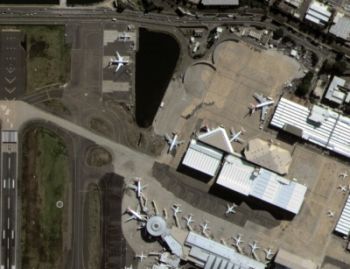Multispectral imaging system returns images from space
February 29, 2016
By James Carroll
Senior Web Editor
Designed by Teledyne DALSA, a multispectral imaging system on board the DMC3 earth imaging satellites, is now returning images from space, in order to aid urban planning andntelligence management based on high-resolution images.
Surrey Satellite Technology Limited (SSTL) launched three SSTL-300S1 satellite platforms that formed the DMC3 constellation, which provides change detection, disaster monitoring, and response planning in the form of high-resolution imagery. Specifically, the high resolution VHRI 100 imager on board the satellites was designed to provide 1 meter ground sampling distance in in panchromatic mode, and 4 meters of GSD in multispectral mode, with a swath width of 23.4km.
Teledyne DALSA created a multispectral imaging solution by placing advanced dichroic filters directly in the imaging area. The company’s multispectral solutions are “push-broom” linear and TDI sensors with linear resolution to 16000+ pixels, in either CCD or CMOS sensor formats. A single multispectral imaging device can contain multiple imaging areas tailored to different multispectral bandwidths (wavelengths).
DMC3 satellites have captured a number of high-resolution images aboard the satellites, including 1 1 meter resolution image of Athens Olympic Stadium and Sydney airport (pictured.)
“We’re pleased by the results we’re seeing from the DMC3 satellites,” commented Luis Gomes, Director of Earth Observation at SSTL. “The imager performance on all three space crafts has surpassed our expectations and the performance of the sensors has been outstanding. The Teledyne DALSA team not only met our critical technical requirements, they have delivered well beyond them.”
View more information on Teledyne DALSA’s multispectral imaging solution.
View more information on the DMC3 mission.


